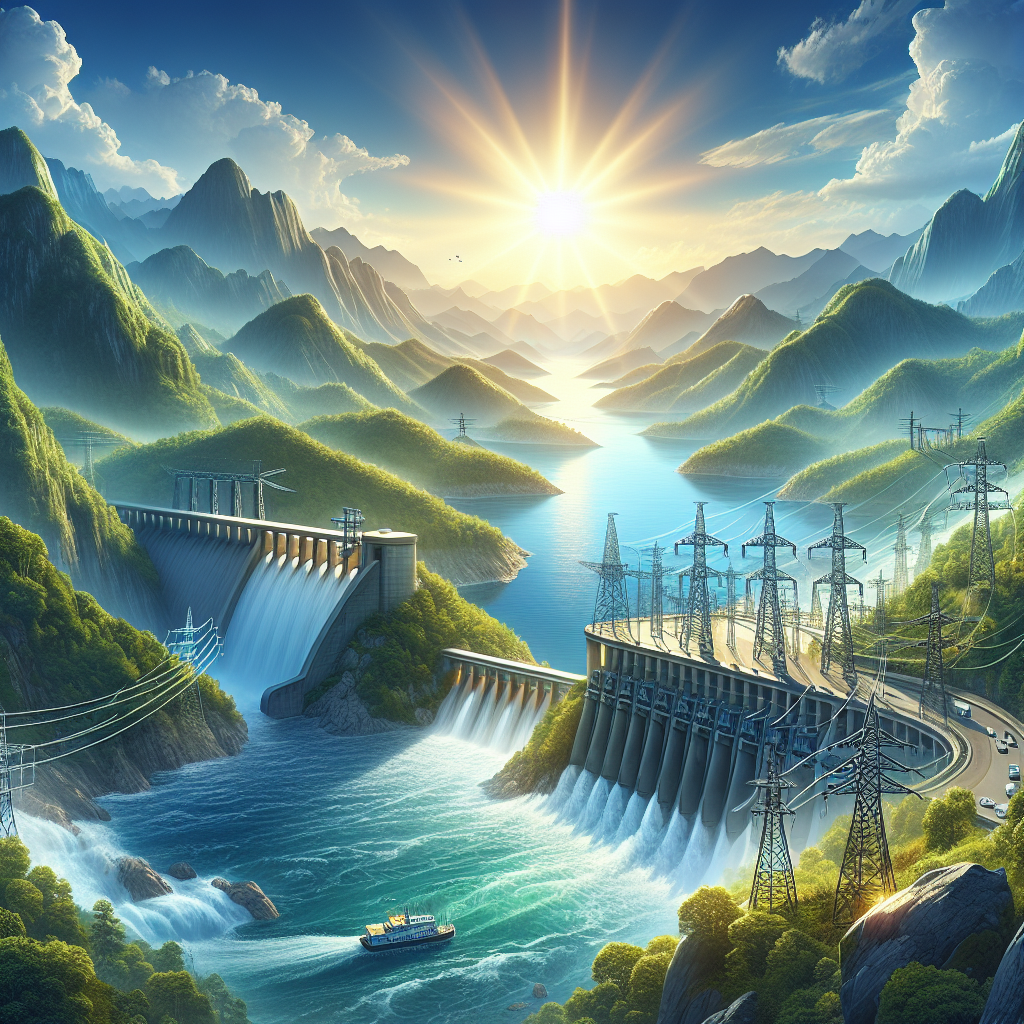The Role of Hydropower in Achieving Renewable Energy Goals
In the quest for a greener planet and a sustainable future, renewable energy sources have become pivotal. Among these, hydropower stands out as a significant contributor, leveraging the Earth’s water resources to generate electricity. This article explores the role of hydropower in achieving renewable energy goals, delving into its benefits, challenges, and future prospects.
Understanding Hydropower
Hydropower, or hydroelectric power, involves generating electricity by using the energy of flowing water. It is one of the oldest and largest sources of renewable energy, contributing significantly to the global energy mix. The process typically involves damming rivers, creating reservoirs, or using run-of-the-river systems to drive turbines that generate electricity.
The Significance of Hydropower
Hydropower plays a crucial role in meeting renewable energy targets for several reasons. Firstly, it is a proven, reliable source of energy that can produce electricity continuously, unlike solar or wind power, which are intermittent. Secondly, hydropower plants have long lifespans, often exceeding 50-100 years, providing sustainable energy solutions over the long term. Additionally, these plants offer flexibility in electricity generation, as they can be quickly adjusted to meet fluctuating energy demands.
Environmental and Economic Benefits
Hydropower is a clean energy source that helps in reducing greenhouse gas emissions. By displacing fossil fuel-based energy, it significantly cuts down on carbon dioxide and other harmful emissions. Furthermore, hydropower projects, especially run-of-the-river and small-scale installations, have minimal environmental footprints compared to other energy sources.
Economically, hydropower contributes to job creation and economic development in rural areas. The construction and maintenance of hydropower facilities provide employment opportunities, while the energy generated can power industries, thereby fostering economic growth.
Challenges and Considerations
Despite its benefits, hydropower is not without challenges. Large-scale projects, particularly those involving dams, can have significant environmental and social impacts. These include habitat disruption, displacement of communities, and changes to local ecosystems. Addressing these issues requires careful planning, environmental assessments, and community engagement to minimize negative outcomes.
Climate change also poses a threat to hydropower. Changing precipitation patterns and water availability can affect the reliability and efficiency of hydropower plants. As such, integrating climate resilience into project planning and operations is essential.
The Future of Hydropower
Looking ahead, the role of hydropower in achieving renewable energy goals is set to evolve. Technological advancements, such as improved turbine efficiency and the development of pumped storage systems, promise to enhance the sustainability and flexibility of hydropower. Additionally, increasing focus on minimizing environmental impacts and incorporating community needs is likely to lead to more responsible and inclusive hydropower projects.
Pumped storage hydropower (PSH), which allows for the storage of energy by pumping water uphill during times of low demand and releasing it to generate electricity when demand is high, is particularly promising. This technology can act as a battery for the grid, providing crucial load balancing and storage capabilities to support the integration of variable renewable energies like wind and solar.
International Cooperation and Policy Support
Achieving the full potential of hydropower in the renewable energy mix requires concerted efforts at both national and international levels. Policies and regulations that support sustainable hydropower development, alongside investments in research and development, are crucial. International cooperation can also facilitate the sharing of best practices, technologies, and resources to advance hydropower projects worldwide.
FAQs
Q1: Is hydropower completely green and eco-friendly?
A1: While hydropower is a clean source of energy in terms of emissions, large-scale projects can have environmental and social impacts. Efforts are ongoing to minimize these through better planning and technology.
Q2: Can hydropower alone meet the world’s energy needs?
A2: While hydropower is a significant component of the renewable energy mix, achieving global energy goals will require a diverse portfolio of renewable sources, including solar, wind, and others.
Q3: How does climate change affect hydropower?
A3: Climate change can impact water availability and precipitation patterns, potentially affecting hydropower generation. Adapting to these changes is crucial for the sustainability of hydropower.
Q4: What are pumped storage hydropower plants, and why are they important?
A4: Pumped storage hydropower plants store energy by pumping water to a higher elevation and then releasing it to generate electricity when demand is high. They are important for grid stability and integrating variable renewable energy sources.
Q5: Are there any new technologies in hydropower?
A5: Yes, advancements include more efficient turbines, pumped storage technologies, and ecological designs to minimize environmental impacts. These innovations continue to enhance the sustainability and efficiency of hydropower.
In conclusion, hydropower is indispensable in the transition to renewable energy, offering a reliable and flexible energy source. Despite its challenges, with responsible management and technological advancements, hydropower can significantly contribute to achieving global renewable energy goals, supporting a sustainable and greener future.

